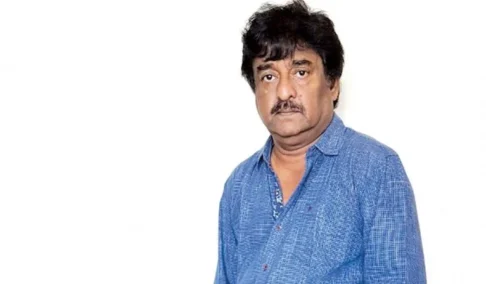Basic Details
From television screens to cinematic thrillers, Shivam Nair is celebrated as a dynamic director Shivam Nair for flourishing across mediums. Born and raised in Kerala, he began his journey with humble roots, passionate about films from an early age. After moving to Mumbai to chase his dream, Shivam edged into the industry through television directing Shivam Nair biography, eventually transitioning into feature films. Today, his shivam nair movies and web series reflect depth, realism, and strong storytelling.
Physical Stats and More
- Height
Not publicly available
- Weight
Not publicly available
- Eye Colour
Not publicly available
- Hair Colour
Not publicly available
Biography
Shivam Nair began his entertainment journey in television in 1982, working in production and writing before moving into directing. His early break came under mentor Sriram Raghavan, collaborating on the docudrama Raman Raghav, A City, A Killer (1991), followed by thrillers like Auto Shankar, Ranga Billa, and Feroz Daruwalla — projects he often directed and edited himself.
His directorial debut in feature films came with Ahista Ahista (2006), scripted by Imtiaz Ali — a romantic narrative praised for its understated realism. Next came Maharathi (2008), a legal comedy-drama featuring icons like Paresh Rawal and Naseeruddin Shah that solidified his reputation as director Shivam Nair with sharp character-driven storytelling.
In 2015, he directed Bhaag Johnny, a suspense thriller starring Kunal Khemu and Zoa Morani, showcasing his foray into darker genres. He continued his cinematic journey with Naam Shabana (2017), an action-thriller spin-off of Baby, and followed by the politically charged The Diplomat (2025) starring John Abraham, based on true events, earning both critical appreciation and box office success
Relationships & More
Career
- Ahista Ahista (2006) — Feature debut showcasing restrained storytelling and character empathy.
- Maharathi (2008) — Ensemble cast film adapting Uttam Gada’s play; earned praise for its wit and ensemble strength.
- Bhaag Johnny (2015) — Psychological thriller adding intensity to his filmography.
- Naam Shabana (2017) — Action thriller exploring espionage and female lead empowerment.
- Special Ops (2020–present) — Co‑directed by Shivam Nair, alongside Neeraj Pandey; acclaimed Indian spy‑thriller series on Hotstar.
- Mukhbir – The Story of a Spy (2022) — Creator/director of the espionage drama based on real intelligence events.
- The Diplomat (2025) — Political thriller featuring John Abraham; box office hit and lauded for realistic portrayal of true events.
Other Details
- Hobbies
Not publicly documented
- Favourite Actress
Not publicly documented
- Favourite Actors
Not publicly documented
- Favourite Movies
Not publicly documented
- Favourite Dishes
Not publicly documented
- Zodiac Sign
Not publicly documented
- Caste
Not publicly documented
- Religion
Not publicly documented
Contributions Beyond Work
Shivam Nair played a pivotal role in shaping Indian on-screen espionage storytelling across mediums. With socially grounded scripts and genre-spanning content, his work in Special Ops, Mukhbir, and The Diplomat exemplifies commitment to realism, layered character arcs, and modern narratives rooted in true events.Shivam Nair
The Legacy of Shivam Nair
From directing early docudramas to shaping contemporary thrillers, Shivam Nair stands as a versatile film director Shivam Nair whose journey is defined by resilience, creativity, and thoughtful storytelling. His films and web series carry a legacy of grounded cinema that resonates with both critics and audiences. Which of his projects left the biggest impression on you? Share your thoughts and let’s dive into his storytelling impact together!
Other Facts:
- His career reflects a gradual rise from assistant roles to television and eventually to directing feature films; he credits TV’s stability in the 1980s–90s with sustaining his passion through the struggle phase .
- Shivam started with relentless passion—from writing to Satyajit Ray’s house at a young age to developing resilience after multiple film projects never materialized. His breakthrough came only in his mid‑40s with Ahista Ahista .

